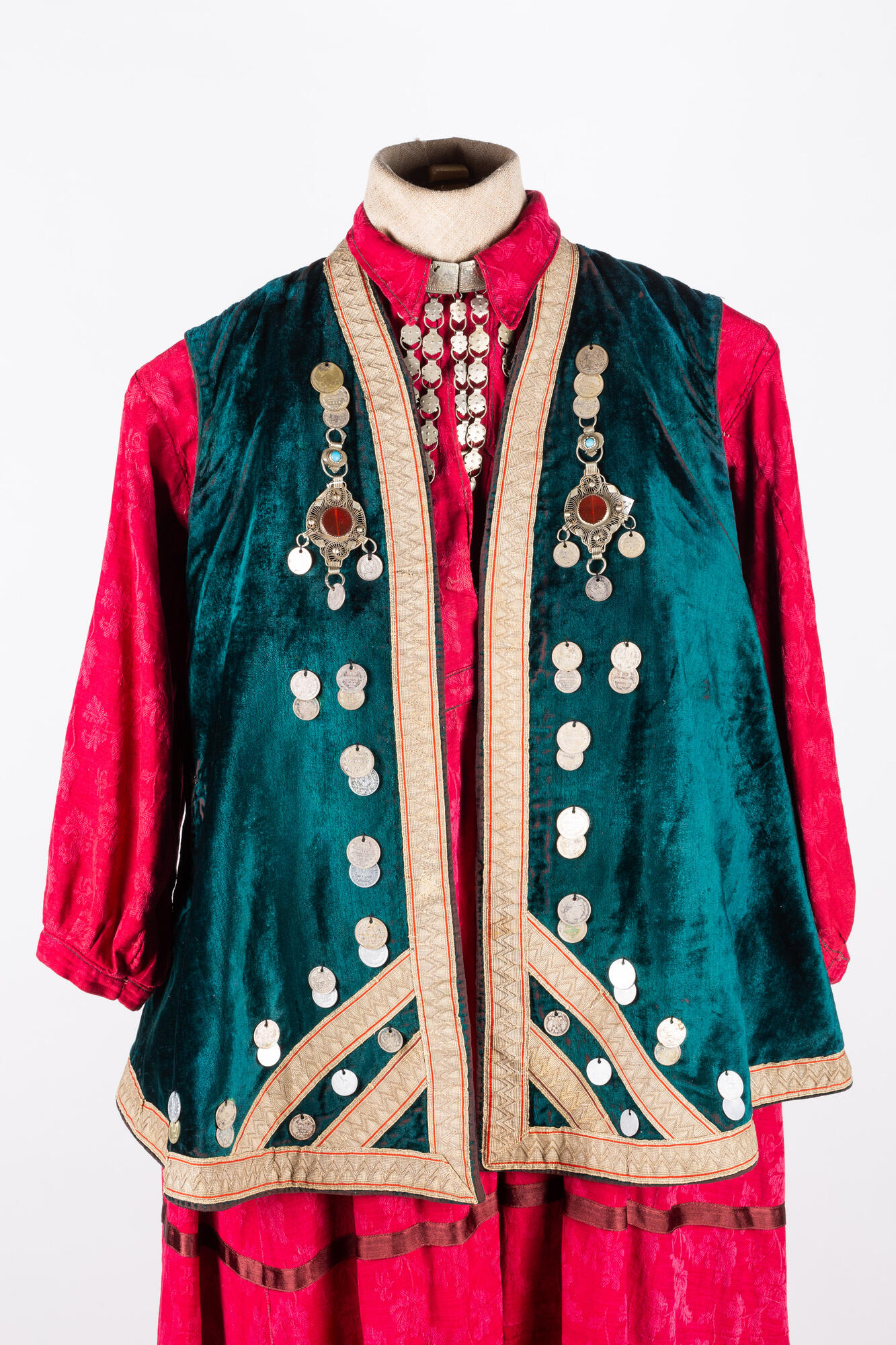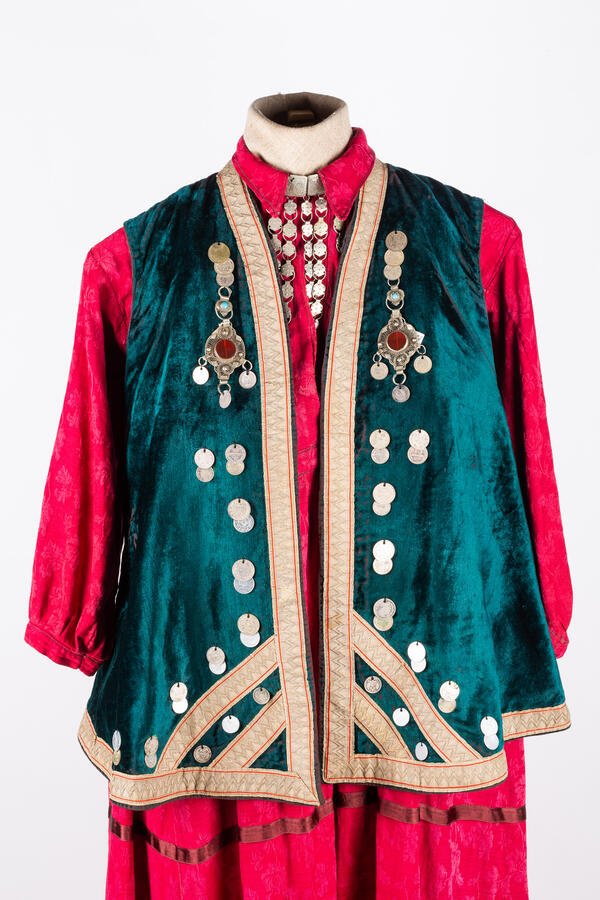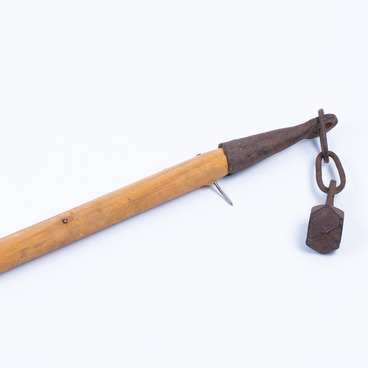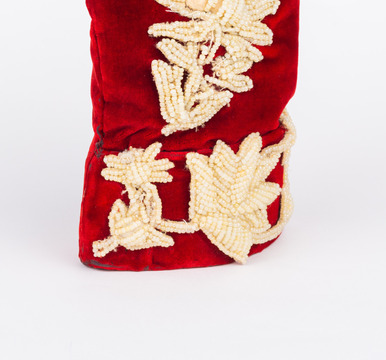In many cases, traditional BashkIr costumes were quite dashing, even elaborate. The classical outwear was short and narrow at the waist, and often with a wealth of adornments. The vest on display is a typical example. It is decorated with coins, as well as with white trimmings against a dark-green background. The lining is made out of black cotton fabric. The contrasting colors make this garment look particularly exquisite.
Vests could be worn by both men and women.
Traditional men’s vests were made out of satin, plush, velvet, or cotton fabric in dark colors. The sleeves were either short, reaching above the elbow, or absent altogether. Men’s vests commonly had a tall, elegant button-up collar. They were worn unfastened over a shirt, and sometimes accessorized with a belt called kemer.
Women’s vests were made from more expensive fabrics: satin, brocade, plush, velvet, and even silk from Central Asia. They had a low collar and ornate set-in pockets. Women’s vests were usually sleeveless. The back, lower rim, and waist were embroidered with colorful broadcloth patterns, intermingling with decorative trimmings. The most popular vest colors among women were dark-blue, green, and red. Beads or coins were used for extra adornments. Traditionally, women wore their vests over a dress, either unfastened or held in place with kaptymra, a two-sided clasp.
The appropriate fashion for older women was a long vest out of black satin. In everyday situations, they wore simple vests, unadorned save for sewn-on coins. But on special occasions, the Bashkir matrons chose more colorful garments, made of bright velvet. Festive vests were always decorated with trimmings in a contrasting color.
There were children’s sleeveless vests as well, with rows of little coins on the chest and back (and seashells or buttons in between the coins). The seams on the back and shoulders of the children’s vests could also be embroidered with colourful beads. The pockets were usually adorned with a single bead or coin.
While the vests were quite bulky, custom called for wearing them even in hot weather. The Bashkir people were very fond of these garments, because of their practicality and elegance.
Vests could be worn by both men and women.
Traditional men’s vests were made out of satin, plush, velvet, or cotton fabric in dark colors. The sleeves were either short, reaching above the elbow, or absent altogether. Men’s vests commonly had a tall, elegant button-up collar. They were worn unfastened over a shirt, and sometimes accessorized with a belt called kemer.
Women’s vests were made from more expensive fabrics: satin, brocade, plush, velvet, and even silk from Central Asia. They had a low collar and ornate set-in pockets. Women’s vests were usually sleeveless. The back, lower rim, and waist were embroidered with colorful broadcloth patterns, intermingling with decorative trimmings. The most popular vest colors among women were dark-blue, green, and red. Beads or coins were used for extra adornments. Traditionally, women wore their vests over a dress, either unfastened or held in place with kaptymra, a two-sided clasp.
The appropriate fashion for older women was a long vest out of black satin. In everyday situations, they wore simple vests, unadorned save for sewn-on coins. But on special occasions, the Bashkir matrons chose more colorful garments, made of bright velvet. Festive vests were always decorated with trimmings in a contrasting color.
There were children’s sleeveless vests as well, with rows of little coins on the chest and back (and seashells or buttons in between the coins). The seams on the back and shoulders of the children’s vests could also be embroidered with colourful beads. The pockets were usually adorned with a single bead or coin.
While the vests were quite bulky, custom called for wearing them even in hot weather. The Bashkir people were very fond of these garments, because of their practicality and elegance.



